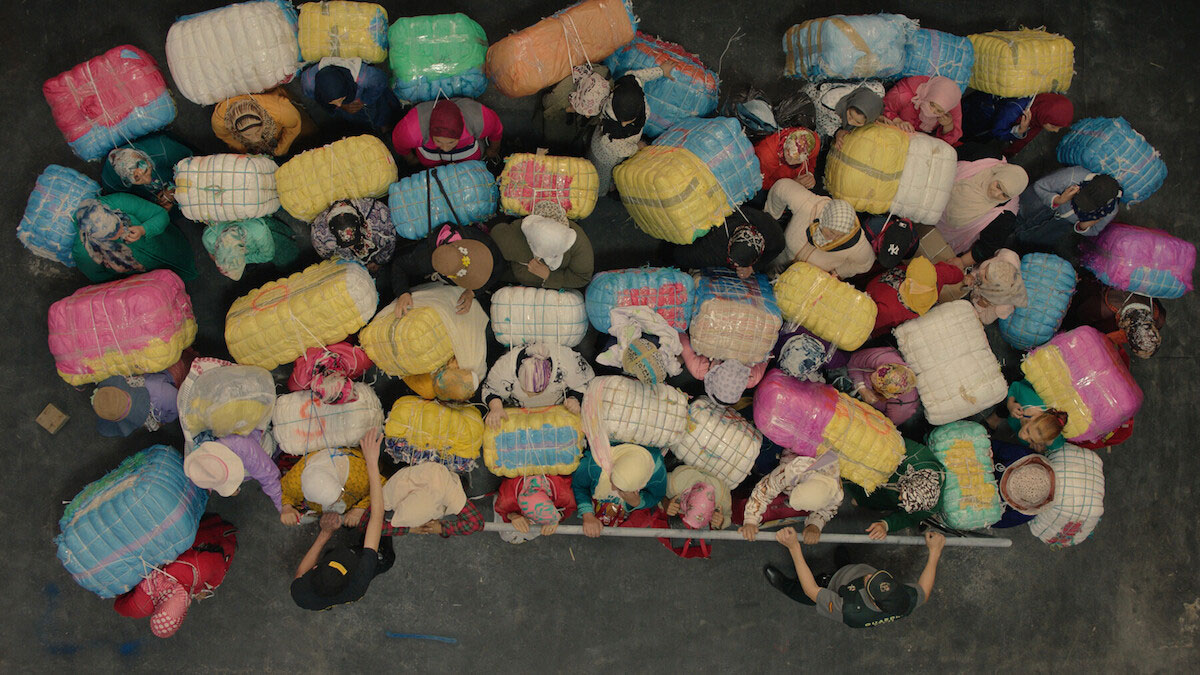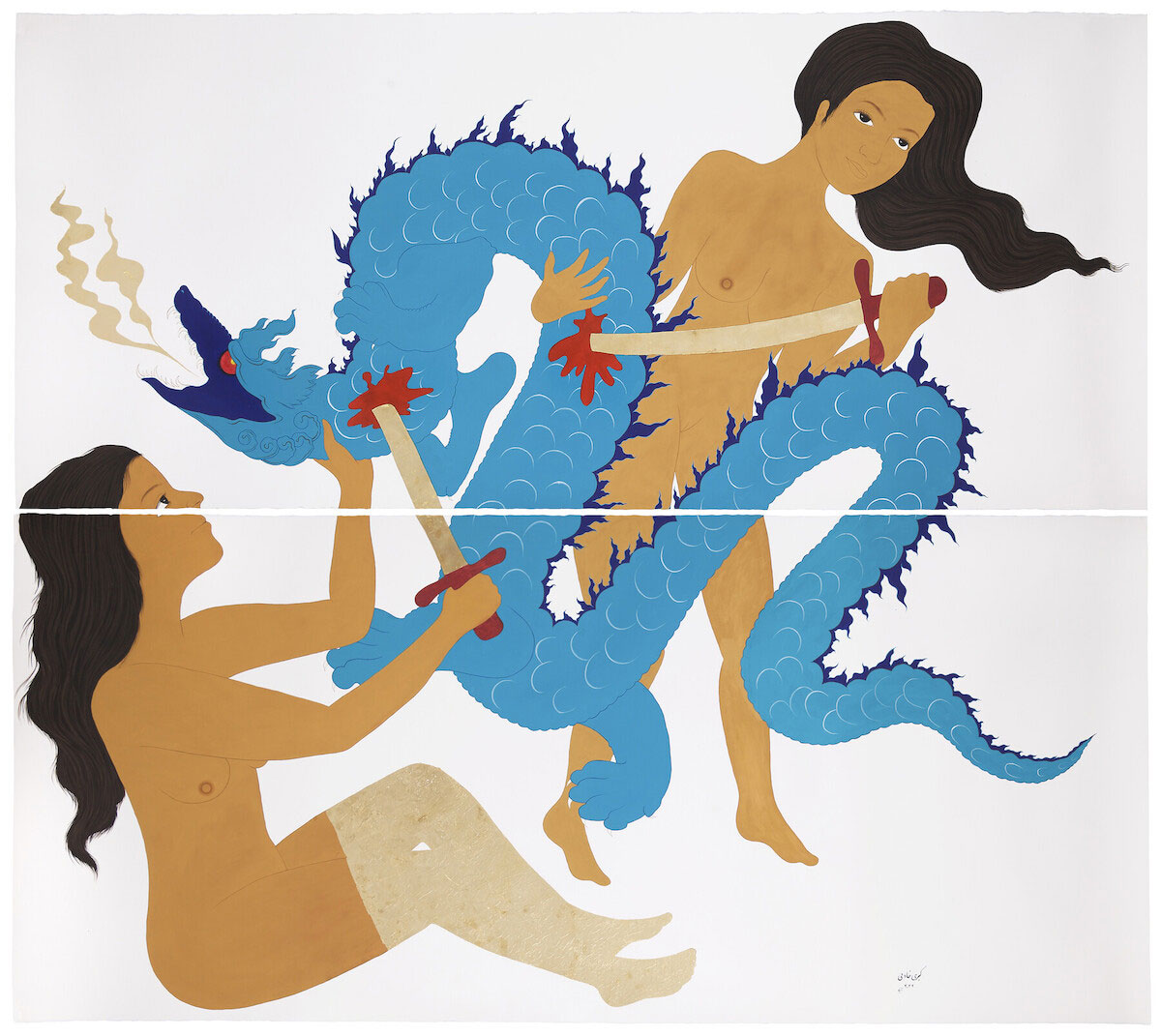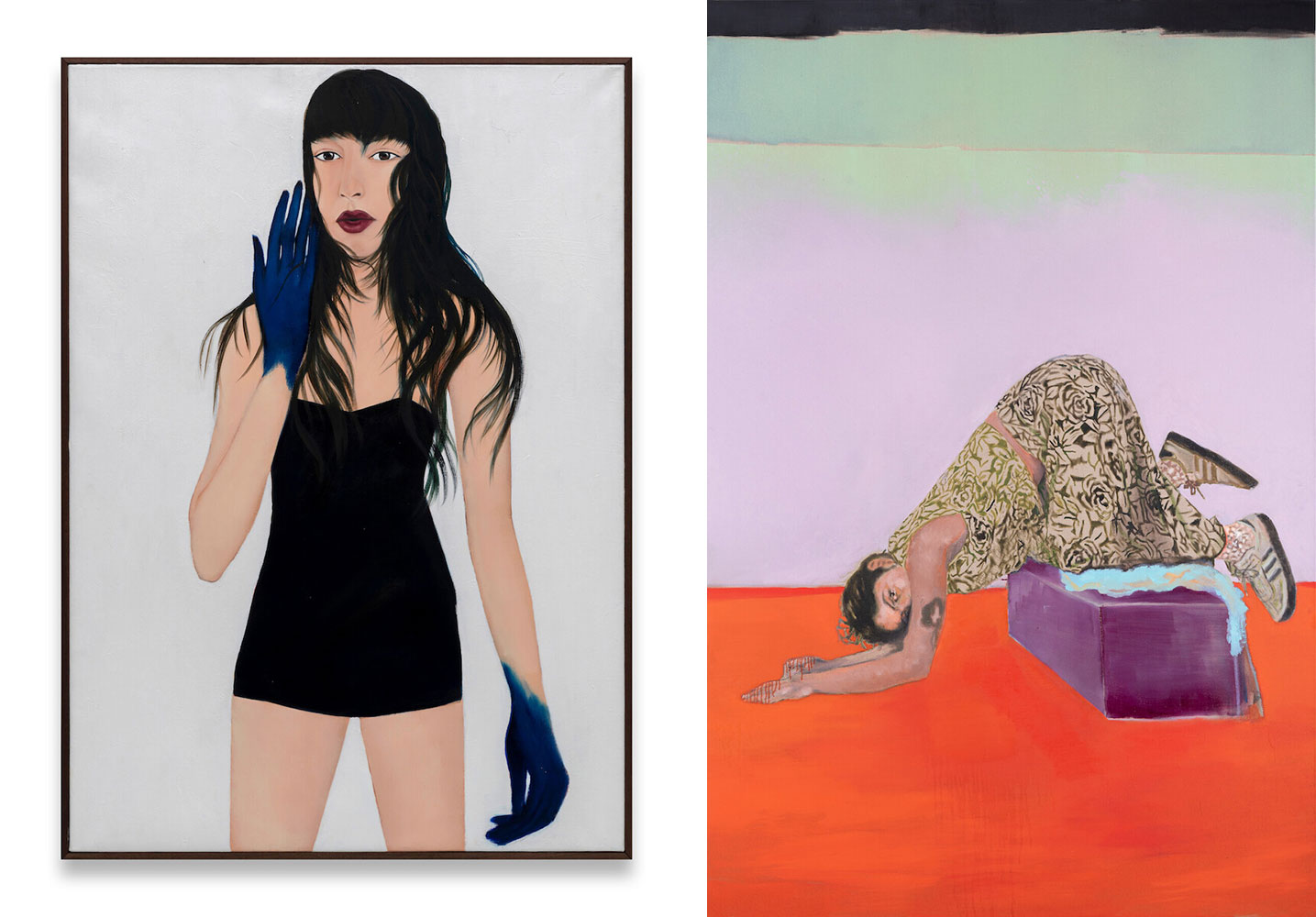ART FAIRS: Art Paris 2023-Art & Commitment
 Art Paris – which was founded in 1999 – is organised by France Conventions, a French family-run business. Thanks to the efforts of its owners, Julien Lecêtre and Valentine Lecêtre, together with fair director Guillaume Piens, Art Paris has become, in the space of 25 years, a leading spring arts event, an innovative art fair that fosters discovery, setting out to explore in depth the world of modern and contemporary art.
Art Paris – which was founded in 1999 – is organised by France Conventions, a French family-run business. Thanks to the efforts of its owners, Julien Lecêtre and Valentine Lecêtre, together with fair director Guillaume Piens, Art Paris has become, in the space of 25 years, a leading spring arts event, an innovative art fair that fosters discovery, setting out to explore in depth the world of modern and contemporary art.
By Efi Michalarou
Photo: Art Paris Art Fair Archive
Art Paris Art Fair is committed to supporting the French scene. Since 2018, it has been asking an exhibition curator to turn a subjective, historical and critical eye on a selection of specific projects by French artists from among the participating galleries. A specific theme is chosen and the focus is accompanied by a text presenting their work. This year’s theme is “Art & Commitment” curated by Marc Donnadieu. As he says “What can art do in these worrying times when war is raging on Europe’s borders, totalitarian states perdure or are reappearing in different areas of the globe and identity-based conflicts threaten social cohesion and the very spirit of democracy. A world in which, faced with climate change, the proposed solutions are derisory if not fundamentally flawed? The answer is nothing – and everything”. Among the presented artists are: Paz Corona in her work, lays bare bodies and identities. If her films are more directly concerned with the reality of life and its upheavals, her paintings are more open and elliptical, based as they are on associations of ideas, references and situations that she tries to resolve through painting. In this work, three narratives commingle around the same principle – shifting from one reality, one plane, one state of consciousness to another. First comes a series of films that Corona has just made in Chili and which are set against the backdrop of insurrection. They are followed by a scene from the Buster Keaton film The General in which the main character’s sweetheart is pulled out of a mailbag. Finally, there is the figure of “Alice”, who is constantly disappearing into one part of reality or a narrative and reappearing from another. In other words, this figure kneeling on a block on the verge of falling is the allegory of a quasi-introspective form of questioning: How can I escape from my disequilibrium, this state of disorder, this disaster? Or: What is the meaning of this present of which I am part, of my life, my destiny and how can I deal with it, control it and set myself free? The entire work of Nancy Spero is dedicated to the victims of totalitarianism, capitalism and male domination. After studying at the School of The Art Institute of Chicago, she began to identify as an underground artist, someone independent and militant who was active in the most important, political, social and cultural struggles of her times. Reduced to silence in the United States, she moved to France where she lived in Paris from 1959 to 1964 with her husband, painter Leon Golub and their two children. It was at this time that she began to draw attention. On her return to the United states, Nancy Spero denounced the participation of the American government in the Vietnam War. At the end of the 60s and beginning of the 70s, her interest in the work of Antonin Artaud led to two series of drawings and collages celebrating the French poet: the “Artaud Paintings” and the “Codex Artaud”. This production marked the dawning awareness of her role as an artist and more particularly the patriarchal symbolic order of language and the specificity of women’s voices. From then on, she devoted herself exclusively to expressing and defending the cause of women, tirelessly revisiting the stereotypical images of the “second sex” over the centuries and across different civilisations. In her work, Agathe Pitié, does away with notions of time, space, history, culture, religion and mythology, preferring instead to create her own improbable and joyous hybrid worlds. Shapes, signs and symbols are dotted throughout the resulting scenes that give tangible form to a caravanserai of creatures and spirits of all origins and all sorts that interact with our contemporary, globalised, media-friendly and virtual world – not forgetting the metaverse. These imagined scenes give rise to meticulous and precise pen drawings, whose use of black contours evokes the techniques used in stained glass and enamelled paint: La Forêt aux Esprits produced on her return from Cambodia is a perfect example.
Thu Van Tran came to France as a refugee. For many years, she has been building up a complex body of work that questions the history of her birth country as seen through the prism of art. One of her exhibitions is entitled Trail Dust, an ambiguous title that evokes, on the one hand, the evanescent nature of her quasi-abstract acrylic on canvas or pigment paintings and watercolours on paper and, on the other hand, the American army’s code name for the spraying of toxic herbicides during the Vietnam War. By delving into the cracks in the image and in history, Thu Van Tran reconsiders both the importance of materials and the materiality of words and their meanings and the ability of art to shed light on the atrocities of the past. She plays with the infinity of time, the fragility of life and the finality of death. Her series “Colors of Grey” features clouds whose grey colour is obtained by superposing the colours that correspond to the name of the herbicides used during the war. The clouds’ fascinating sensuality is disrupted by the possibility that they are in fact toxic (for natural or artificial reasons). In her work, Thu Van Tran therefore transcends the way in which we experience the beauty of art, which is never as innocent here as it seems in real life. Apolonia Sokol is emblematic of new generation of intrepid and audacious women painters born in the 80s, artists endowed with a strong personality and aware of all that the history of art can offer them in terms of forms and signs. They are also aware of what they have to gain by shifting to a figurative representation of a world that is all of their own. Of Polish descent, Sokol grew up between Denmark and France. She has lived in New York and Los Angeles, but feels just as at home in the Byzantine and Muslim city of Istanbul at the crossroads of Europe and Asia. Informed by this wealth of different cultures and perspectives, her paintings are minimalist closed spaces like small, almost metaphysical theatres of the mind. They are full of hieratic female figures – including the artist herself – who are grappling with everyday life, feelings and emotions, as well as their struggles, hopes and dreams. Hassan Musa often refers to Josephine Baker: “She was the black woman who just happened to be in the right place at the right time, at the crossroads of all the major socio-cultural contradictions present in French society in the interwar period: colonialism, ethnology, fascism, surrealism, primitivism, Negro art, the Charleston and short dresses. If at the time people ‘couldn’t see the wood for the trees,’ Baker was the American tree that hid the African forest”. Musa’s entire body of work lies at the nub of similar contradictions, a mix of cultural narratives, political and economic interests, social change, the memory of peoples and the continued existence of violent, oppressive systems. By means of a clever play of convergences, juxtapositions and superpositions, these contradictions explode onto the canvas like disturbing reminiscences bringing back to life things left unsaid in the meanders of art and the world at large. “Dante de Lampedusa II” (2019) revisit Delacroix’s La Barque de Dante, portraying a voyage to hell across our own contemporary River Styx: the Mediterranean. From one ironic and incensed painting to the next, Hassan Musa tirelessly wonders from what stuff are made those who have – or have not – been raised to the status of icons of the media or the arts, as well as by whom and why this has come to pass. The multidisciplinary artist Kubra Khademi has taken her joint status, respectively as a woman and a refugee, as the starting point for her artistic approach and the source of inspiration for her entire body of work. It was indeed the public performance of Armor in Kabul – a response to the tyrannical and extremely patriarchal nature of Afghan society – that forced her to flee to France. Her work is informed by the resources, contradictions and rules affecting women in Islamic society, from the ancient Persian civilisations to her time at Beaconhouse National University in Lahore (Pakistan). Childhood memories also play a role, in particular her difficult relationship with her mother and sisters and the fact that it was impossible for her to consider herself an artist, despite her skill at drawing that she kept secret.
Works by: Paz Corona, Sépànd Danesh, Damien Deroubaix, Angèle Etoundi Essamba, Jacques Grinberg, Laura Henno, Alain Josseau, Kubra Khademi, Randa Maroufi, Agathe May, Hassan Musa, Prune Nourry, Agathe Pitié, Rakajoo, Paul Rebeyrolle, Apolonia Sokol, Nancy Spero, Hervé Télémaque, Thu Van Tran & Duncan Wylie
Photo: Randa Maroufi, Bab Sebta (Ceuta’s Gate), 2019 Film & Video Barney Production (Sophie Penson, Said Hamich) Shortcuts Distribution (Judith Abitbol), Courtesy Paris-B
Info: Fair director: Guillaume Piens, Guest Curators: Marc Donnadieu & Amanda Abi Khalil, Grand Palais Éphémère, 2 Plateau Joffre, Paris, France, Duration: 30/3-2/4/2023, Days & Hours: Thu (30/3 & Sat-Sun 1-2/3) 12:00-20:00, (Fri 31/3) 12:00-18:00, Admission: Thu or Fri: € 25 / € 15 for students, Sat or Sun: € 30 / € 18 for students, 2-day pass: € 35 / € 20 for students, Free entry for children under 10 years old, www.artparis.com/en


Right: Paz Corona, Untitled, 2022, Painting, 220 x 180 cm, Courtesy Galerie Les Filles du Calvaire

Right: Jacques Grinberg, Le casque prison, 1964, Oil on canvas, 81 x 65 cm, Courtesy Galerie Kaléidoscope



Right: Agathe May, “Le modèle” (détail), 2020, Courtesy Galerie Catherine Putman

Right: Damien Deroubaix, Sans titre, 2020, Painting, 250 x 180 cm, Courtesy Nosbaum Reding Gallery

Right: RaKaJoo (a.k.a Baye-Dam Cissé) Toi et moi, 2022, Acrylic and oil on canvas, 162 x 114 cm, dated and signed, Courtesy Danysz
